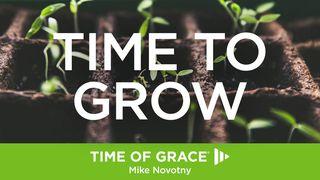Plan Info
See the Big Picture. Dig In. Live It Out: A 5-Day Reading Plan in MarkSample

The Big Picture
Yesterday’s reading revealed that the Pharisees accused Jesus of blasphemy for his forgiving the sins of the paralytic and his association with tax collectors and sinners. In today’s reading, we examine the final three conflict stories. The first concerns the issue of fasting, and the last two concern the Sabbath day. The entire section (Mark 2:1–3:6) culminates with the Pharisees and Herodians plotting to kill Jesus (3:6).
Digging In
The third conflict story centers on the practice of fasting (2:18–22). The Law of Moses required only one day of fasting a year on the Day of Atonement (cf. Lev. 16:29, 31; 23:27–32). Four other yearly fasts were observed by the Jews after the Babylonian exile (Zech. 7:5; 8:19). In Jesus’ day, the Pharisees fasted twice a week. Jesus was not opposed to fasting (Matt. 6:16) and the early church practiced the spiritual discipline as well (Acts 13:2).
Jesus responds to them with three brief parables. In the first, the inauguration of the kingdom is like a wedding feast, and no one attends a wedding feast while fasting. A Jewish wedding was a joyful occasion, and the celebration could last as long as a week. To fast during such festivities was unthinkable. Fasting was associated with times of sorrow and repentance. A day was coming, however, when Jesus, the bridegroom, would be taken from them by death, and then fasting would be appropriate.
The second and third parables are called twin parables because of their similarities and the fact that they teach the same lesson. You would not take a new piece of cloth and attach it to an old garment because when you washed it the new patch would shrink and pull away, ruining the old garment. In a similar way, you would not put fresh grape juice into an old wineskin. In ancient times, goat skins were used to hold wine. As the fresh grape juice fermented and the wine expanded, the old wineskin would lack flexibility and it would burst and the wine would be lost. Jesus brings a newness that cannot be confined within the old forms of religion.
The fourth conflict story is a debate between Jesus and the Pharisees over appropriate behavior on the Sabbath (Mark 2:23–28). Apparently, the Pharisees were keeping a close watch on Jesus and his disciples. The Pharisees were complaining that Jesus’ disciples were harvesting on the Sabbath day. The Law forbids harvesting on the Sabbath (Exod. 34:21), protecting a farmer from greed and ignoring the worship of God. Furthermore, this law protected the laborers from being overworked and taken advantage of.
Jesus and the disciples were clearly not harvesting as a farmer would do. Instead, they were merely picking the grain to satisfy their hunger, which was entirely appropriate behavior according to Deuteronomy 23:25: “When you enter your neighbor’s standing grain, you may pluck heads of grain with your hand, but do not put a sickle to your neighbor’s grain.”
Jesus appeals to the example of David in 1 Samuel 21:1–6. Each Sabbath, twelve fresh loaves of bread were to be set on a table in the holy place (Exod. 25:30; Lev. 24:5–9). The old loaves were eaten by the priest. The relationship between the Old Testament incident and the apparent infringement of the Sabbath by the disciples lies in the fact that, on both occasions, godly men did something seemingly forbidden. What the disciples did was clearly appropriate. And since doing good and saving a life (even on the Sabbath) is always “lawful,” both David and the disciples were within the spirit of the law (cf. Isa. 58:6–7).
Jewish oral traditions had so multiplied the requirements and restrictions for keeping the Sabbath that the day became a burden to God’s people rather than a blessing. Jesus clearly stated that God intended the Sabbath for man, that is, for spiritual, mental, and physical renewal (Mark 2:27). Jesus concludes by declaring that he, the Son of Man, is Lord of the Sabbath. His point is that he has the authority to interpret the true meaning of the Sabbath and particularly to override the oral traditions of the Pharisees that made the day a burden.
The final conflict story also takes place on a Sabbath day (3:1–6). What makes this story different from the previous four is that Jesus asks the question and his opponents are unable to answer. This story connects to the previous story in the fact that Jesus demonstrates by his healing of the man with the withered hand that he truly is the Lord of the Sabbath.
Jesus put his opponents in a difficult position with the question he asks them (3:4). The irony is that while Jesus is preparing to heal a man, the Pharisees are considering how to put Jesus to death-clarifying who is guilty of breaking the Sabbath (“Is it lawful to do good on the Sabbath or to do evil, to save life or to kill?”).
The Pharisees remain silent. After looking around at them, Jesus’ emotions are mixed. He is righteously indignant at their callousness, but at the same time, he is grieved over their hardness of heart (3:5). Jesus commands the man to stretch out his hand, and as he does, his hand is restored. Rather than praising God for the man’s healing, the Pharisees and Herodians conspire about how to kill Jesus.
Living It Out
The Pharisees raised their traditions to the level of Scripture (cf. 7:1–23). Before we criticize them too quickly, however, we must ask ourselves if there are not matters of preference with which we have done the same. Whether in worship styles, or the proper attire for church—casual or “Sunday best”—believers must make sure that their preferences or cultural traditions are not confused with Scripture.
Scripture
About this Plan

The Holy Spirit uses God’s Word to grow believers in their faith and increase their passion for Jesus. Break down the book of Mark into the “Big Picture” of the passage, then “Digging Deeper” into that section and then m...
More
We would like to thank B&H Publishing for providing this plan. For more information, please visit: http://40daysseries.net/
Related Plans
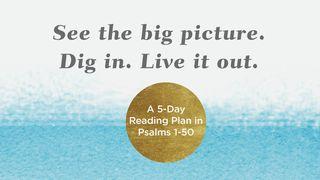
See the Big Picture. Dig In. Live It Out: A 5-Day Reading Plan in Psalms 1-50

See the Big Picture. Dig In. Live It Out: A 5-Day Reading Plan in 1 Corinthians

See the Big Picture. Dig In. Live It Out: A 5-Day Reading Plan in 1 Samuel
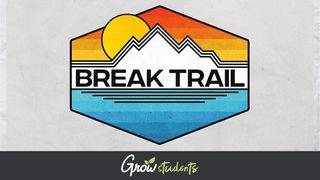
Break Trail

Justice for All
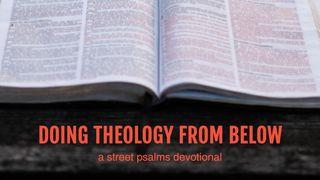
Doing Theology From Below
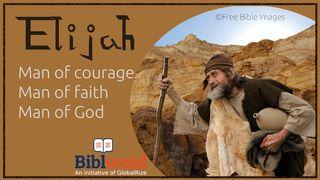
Elijah. Man of Courage, Man of Faith, Man of God.
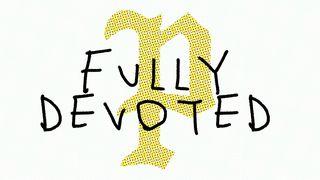
Fully Devoted

Pass It On
